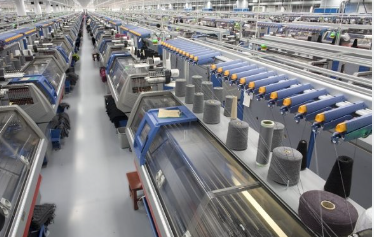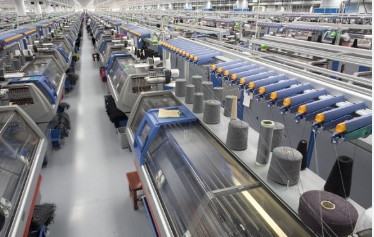In the fashion industry, realizing a brand calls for much more than simply artistic ideas. Any effective knitwear brand is based on a talented and dependable manufacturer that can copy the design and also provide good quality. The knitwear producers are not only factories but also essential collaborators that turn designers’ ideas into real goods that consumers might wear and enjoy. A knitwear maker is very important in developing the reputation and success of a brand since several elements influence the choice of materials and ensure that high-quality workmanship is being entailed. Knitwear Manufacturer
Table of contents
1. Appreciating the Vision of the Brand
One must have a vision if one wants a profitable knitwear brand. Whether sustainability, luxury, or price, the manufacturer has to know and complement the brand’s objectives.
A designer-manufacturer partnership produces a knitted item that captures brand identification. Close collaboration between manufacturers and brands lets them improve their designs, materials, and even manufacturing processes to fit the manner they wish their ideas realised.
2. Selecting the Correct Components
Production of knitwear depends much on the fabric and yarn used. Manufacturers assist brands in choosing materials not only for their desired appearance but also for quality criteria.
3. Making Prototypes and Samples
The maker fixes samples for prototype testing to allow fault-accrual and corrections—that is, techniques application for knitting pattern tests, and changes towards fit and style preferences—before major manufacturing starts.
Every possible mistake is checked to ensure it does not exist the minute manufacturing reaches full-scale. Manufacturer trial and error helps the businesses develop final designs where their ideas have found a balance between durability, comfort, and beauty.
4. Selecting Appropriate Methods of Production
Based on the demands of the brand, knitwear makers use different production procedures. Some often-used techniques consist of:
Structured clothing
Like cardigans and sweaters use flat knitting. Often used for sportswear and underwear, circular knitting produces seamless goods. Perfect for very intricate motifs and patterns, Jacquard and Intarsia Knitting
3D Knitting is a sustainable method of creating minimal waste clothing. Every technique affects the texture, durability, and flexibility of the final product; so, makers must decide on the ideal one for every design.
5. Guaranteeing Control of Quality
A brand is really mostly about its reputation, which is strongly related to its quality. Most producers have several quality inspections to guarantee that every product complies with the most exacting standards.
This covers fabric durability as well as verifying suitable sizes and consistency of stitching. Many producers also conduct wash-and-wear testing to confirm that the knitwear holds its colour and form throughout use. Its good quality, brand loyalty, and reduced returns or complaints help to raise consumer satisfaction as well.
6. Scaling Manufacturing for Expansion
Once developed, brands have to guarantee an effective manufacturing scale. A reliable knitwear company will increase production with quality output while simplifying processes, investing in cutting-edge machinery, or rapid enough procurement of experienced labour to satisfy delivery schedules without sacrificing workmanship. Manufacturer inventory control helps brands stay free from overabundance or shortages.
7. Ethical and Ecological Methods
Customers of today respect sustainability, hence companies have to follow moral production standards. Many knitwear companies have also embraced sustainable methods of manufacture, including zero waste knitting, reduced water use, and environmentally friendly dyes less water use, Maintaining labour ethics—that is, paying justice and safety at the workplace—is another essential component in building a brand image.
Working with ethical producers helps one to build trust with their audience and support sustainable fashion production companies.Knitwear Manufacturer
8. Creativity and Personalisation
Innovation in knitwear manufacturing techniques determines whether or not brands can stand out in an always competitive market.
Advanced designs, unique textures, and maybe smart materials with temperature-regulating properties can all be accommodated by the improved knitting techniques.
Thus, depending directly on consumer preferences, producers let brands of knitwear either build limited collections or custom-made items. Quite crucial, the maker keeps brands fresh and ready by being on top of industry trends.

Support of Branding
Apart from manufacturing, manufacturers are also very important in packaging and branding. Knitwear of quality is meant to be packed to complement its value.
For private label solutions, manufacturers provide customising choices; for ecologically friendly packaging and branded tags, which enhance the consumer experience, manufacturers also provide
Careful packaging not only shields the goods but also leaves a lasting image and helps consumers to develop brand identification.
Creating Extended Collaborations
Trust, communication, and common aims on both sides define a good connection between knitwear companies and manufacturers.
Long-term relationships between brands and their manufacturers ensure stability of product quality, dependability of lead times, and room for development.
A reliable manufacturer will, for instance, collaborate with the brand in production to guarantee seamless operations and thereby support the development of a brand.
Starting a knitwear brand from nothing seems difficult, but with the correct combination of workmanship, financial sense, and brand storytelling, it is doable. A brand distinguishes itself not only in terms of knit quality but also in terms of the ideas, care, and ideals spun into every thread.
For rookie producers,
The secret is to start lean yet think broadly. Accept technology, keep your customer-oriented, and avoid rushing the process. Every sweater or scarf is a bit of the soul of your brand, not just a good. And that soul counts in a society yearning for authenticity more than ever.
Whether you run a large manufacturing line or hand-knit from your studio, developing a knitwear company combines business with art. Vision, consistency, and perseverance will help you to create something rather remarkable from a spool of yarn.
Final thoughts
A knitwear producer is not only a production partner; rather, they are a necessary component in realizing a brand.
From knowing the idea of a brand to guaranteeing sustainability and quality, manufacturers are essential at all stages of the production.
Selecting the correct manufacturer will make all the difference in producing knitwear that not only looks fantastic but also appeals to consumers and the test of time. Working with a knowledgeable manufacturer is the secret to success for any knitwear business trying to make an impression.
Conclusion
As a knitwear producer, building a brand from nothing is about expressing a story via craftsmanship, culture, and creativity, not only about making clothing. From choosing quality yarns and creating classic designs to establishing a web presence and interacting with consumers, a good knitwear firm combines enthusiasm with savvy business techniques.
The road starts with seeing a distinctive vision, knowing the market, and defining a clear brand voice. The practical process—designing, sampling, manufacturing, and marketing—then follows. Manufacturers have to strike a balance between sustainability and quality, trends with authenticity, and tradition with innovation along the way.
In a world of generic labels and rapid fashion, a successful knitwear brand lives on uniqueness. It seeks a niche, solves a problem, and ties strongly with a certain audience—it does not strive to satisfy everyone. Though modest at first, consistency, openness, and heart will help it to become a household name.
FQS
Starting a knitwear brand calls for what kind of capital?
It varies depending on scale. If you hand-knit or deal with local artists, a tiny startup can start with as little as £5,000–£10,000. Bigger enterprises involving internal production and inventory requirements could call for £50,000+.
What distinguishes a brand of knitwear?
designs, premium yarns, environmentally friendly manufacturing methods, and real brand storytelling. A clear niche and a strong brand identity also help.
Is environmentally friendly knitwear in demand?
Totally. Environmentally conscious buyers are searching for ethically produced, sustainable apparel more and more. One of your strongest selling points might be using ethical work standards and recycled or organic yarns.
Can I outsource, or must I make it myself?
You are free to do either. Many companies work with reputable knitwear companies to create their designs. Others decide to retain all of it in-house for branding and quality control needs.
For a new knitwear brand, what value does internet presence have?
Crucially important, building exposure and communicating with consumers depends on a solid website, interesting social media, and e-commerce capabilities—especially for direct-to-consumer firms.Knitwear Manufacturer



